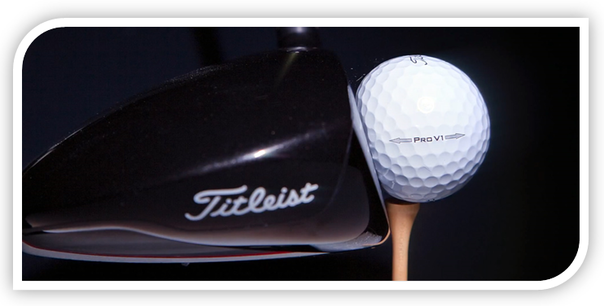 It doesn't matter if you are a 24 handicapper who just wants to break 90 or a budding Tour Professional; your equipment is the first variable you need ticked off on your list of ways to play better golf. Why should it be the FIRST step? Because it is difficult to improve your ball flight, skills and technique if your equipment is getting in the way. An artist would not begin a painting if the canvas was filthy and his brushes were the wrong size would he? Trying to become a better golfer isn't easy but you have to start with the right tools for you! Other important boxes to tick on your improvement schedule should be getting a proper screening from a TPI (Titleist Performance Institute) qualified professional and also having a PGA qualified professional to help you with your golf course management, mental game and swing technique/short game skills. Your equipment must be tailored to help you achieve your ball flight goals, whether it is to slice the ball less, or lower the trajectory of your irons. If you have been fitted before and the fitter did not ask you what you want to achieve with your ball flight that constitutes considerable failure by him. It is like a doctor cutting you open before asking what is wrong! Most equipment is designed to help a player achieve a certain ball flight, but it varies greatly. There are literally thousands of models and designs from which to choose.  This applies not just to clubs; balls are an important part of a good player’s armory, and the only piece of equipment you use on every shot. The importance of your golf ball should not be underestimated. It is incredible how much equipment has improved in the last 20 years, yet the average handicap has not come down. There is a lot of misinformation out there, and most players we see really don't understand their own equipment well enough, and that includes many people playing the game for a living! I hope this 2 part article helps you to break through the confusion and get you onto a path to "ticking the boxes" when it comes to the equipment you use to play our wonderful game. I'm going to break down this article into three sections: 1. What properly fitted equipment should do for you. (part 1.) 2. What to look for in a fitting professional. (part 2.) 3. Fitting myths and common fitting mistakes we see every day. (part 2.) 1. WHAT PROPERLY FITTED EQUIPMENT SHOULD DO FOR YOU a) Properly fitted equipment should help you achieve more solid, centered contact on the club-face. Clubs that are the wrong length, especially, can cause poor contact, and severe loss of ball speed. Centered contact will help maximize ball speed and distance (I know you want some of that)! Club-head design can also cause impact-related problems, such as lie angle, bounce angles, weight and even grip size. b) Properly fitted equipment should help you achieve a desired trajectory. It's no good buying "super game improvement" irons with a low center of gravity to help the ball fly higher for example, if your ball flight goal is to lower your ball flight.  Selecting a model of golf club and ball to help your launch conditions (spin rate, launch angle, ball speed) is critical. Again, a good fitter should know what you are trying to improve or achieve with your trajectory, and recommend suitable products. For example, if your goal is to stop pushing or slicing the ball, then perhaps an offset model can help, because it makes it easier to square the club-face and start the ball online. The ideal launch conditions will help you maximize distance. c) Properly fitted equipment should help you achieve better accuracy. Great players who make a living from the game are highly concerned with their shot dispersion and ensuring their clubs are helping them be as accurate as they can be. Are you concerned about your accuracy? Or are you obsessed with distance? Distance is advantageous, but it can come at the expense of accuracy and control. If you really want to improve, and score better, a good combination of both accuracy and distance is essential. Next week we'll continue with part 2 where I'll cover; 1. What to Look For in a Fitter 2. Myths and Common Fitting Mistakes See you next week. Anthony Sinclair P.G.A. (Australia) Comments are closed.
|
Archives
June 2019
|
Proudly Supported By
Copyright © 2011 - 2018 Pro Tour Golf College
Website Managed By Golf Performance Media
All Rights Reserved
Website Managed By Golf Performance Media
All Rights Reserved



 RSS Feed
RSS Feed



